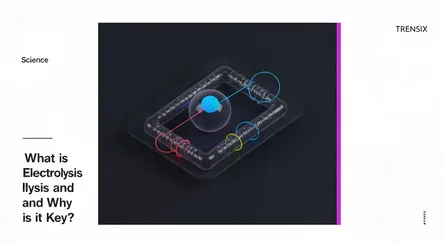Science
What is Electrolysis and Why is it Key?

An explainer on electrolysis, the chemical process driven by electricity, and its growing importance in green energy and industrial applications.
What is it?
Electrolysis is a process that uses a direct electric current to drive an otherwise non-spontaneous chemical reaction. The term "lysis" means to separate, so electrolysis translates to "breaking down via electricity." It occurs in an electrolytic cell, where a substance dissolved in a solution or in molten form, called an electrolyte, is decomposed. Two electrodes, a negative cathode and a positive anode, are immersed in the electrolyte and connected to a power source. When current flows, ions migrate to the electrodes, causing chemical changes like decomposing compounds into their elements.
Why is it trending?
Electrolysis is gaining significant attention due to its crucial role in producing "green hydrogen" from water. As the world seeks sustainable energy sources, using renewable electricity to power electrolysis for hydrogen fuel production is a key decarbonization strategy. Industrially, it remains vital for producing chlorine and sodium hydroxide, and for extracting and purifying metals like aluminum and copper. Furthermore, in the beauty and medical fields, electrolysis is the only FDA-approved method for permanent hair removal, making it a popular and trusted solution for cosmetic purposes.
How does it affect people?
Electrolysis has a broad impact on daily life. Industrially, it is fundamental to manufacturing numerous products, from cleaning agents to metal components in cars and electronics. The rise of green hydrogen produced via electrolysis could lead to cleaner transportation and energy systems, affecting global energy infrastructure. For individuals, its most direct application is as a permanent hair removal method. While highly effective, this cosmetic procedure can cause temporary side effects like redness, swelling, and in rare cases, minor scarring or skin discoloration if not performed correctly.